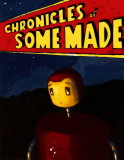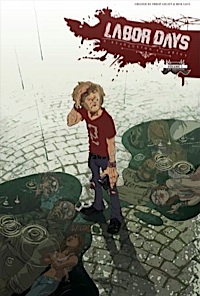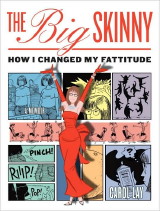Review: ‘Chronicles of Some Made’ by Felix Tannenbaum
 Chronicles of Some Made
Chronicles of Some Made
By Felix Tannenbaum
Passenger Pigeon Publishing, October 2008, $10.25
Tannenbaum received a 2008 Xeric Award for the two stories collected here – in fact, the way of the Xeric, these two stories are collected because they won the award. The Xeric is specifically and entirely to help self-publishers get their work out; to help get more new, different, interesting comics projects to see the light of day and get into readers’ hands. Because of that aid, [[[Chronicles of Some Made]]] is now available via Amazon, and it will be in comics shops in the spring.
There are two stories here: “[[[The Dent]]],” about seventy pages long in four chapters, and the shorter (just under twenty pages) earlier story “[[[Why Doesn’t My Robot Love Me?: A Cautionary Fable.]]]” Both are stories of robots, but Tannenbaum’s robots are very un-Asimovian: they are deeply emotional and as impetuous and driven by desire as any human. (They’re very much, to use Charles Stross’s term, emotional machines.)
“The Dent” is the story of three robots at war. The story begins as they travel together towards a point where battle rages. They know where they’re going, but not why – though they do know that they’re not supposed to question their orders. Seeing the devastation for several hills away, they’re all silently sure that following their programming will lead to their destruction. And yet, when two of them try to break all three of them free from that programming, the results are not good.





 My reading has been rejuvenated over the past couple of weeks by infusions from the Eisner Overmind – I’m a judge this year, and so I’m reading ahead in preparation for the big judging weekend coming up at the end of March – in particular by these three recent, and unique, manga volumes. All are complete stories in themselves, which seems rare for manga, and they range pretty far – from each other, and from the well-trodden paths of shonen and shojo.
My reading has been rejuvenated over the past couple of weeks by infusions from the Eisner Overmind – I’m a judge this year, and so I’m reading ahead in preparation for the big judging weekend coming up at the end of March – in particular by these three recent, and unique, manga volumes. All are complete stories in themselves, which seems rare for manga, and they range pretty far – from each other, and from the well-trodden paths of shonen and shojo.


 These two books have very little in common on the surface, but, beneath that…they deeply have little in common. But they’re both fairly new, not all that well-known, and self-published by their respective female creators (with an asterisk in the first case, which I’ll get to) – so that’s good enough for me.
These two books have very little in common on the surface, but, beneath that…they deeply have little in common. But they’re both fairly new, not all that well-known, and self-published by their respective female creators (with an asterisk in the first case, which I’ll get to) – so that’s good enough for me. Manga Friday took a little holiday for the last couple of weeks, and it may take more holidays in the weeks to come. Looking back on my recent columns, I’ve said an awful lot of “and here’s the next volume in a series I’ve reviewed four times” and “this week’s books have nothing in common” – and neither of those are quite what I’d hoped. I think I’m reviewing too many of the same manga, too often, so I expect to cut back on Manga Friday substantially in 2009, unless I start seeing more different things.
Manga Friday took a little holiday for the last couple of weeks, and it may take more holidays in the weeks to come. Looking back on my recent columns, I’ve said an awful lot of “and here’s the next volume in a series I’ve reviewed four times” and “this week’s books have nothing in common” – and neither of those are quite what I’d hoped. I think I’m reviewing too many of the same manga, too often, so I expect to cut back on Manga Friday substantially in 2009, unless I start seeing more different things.








